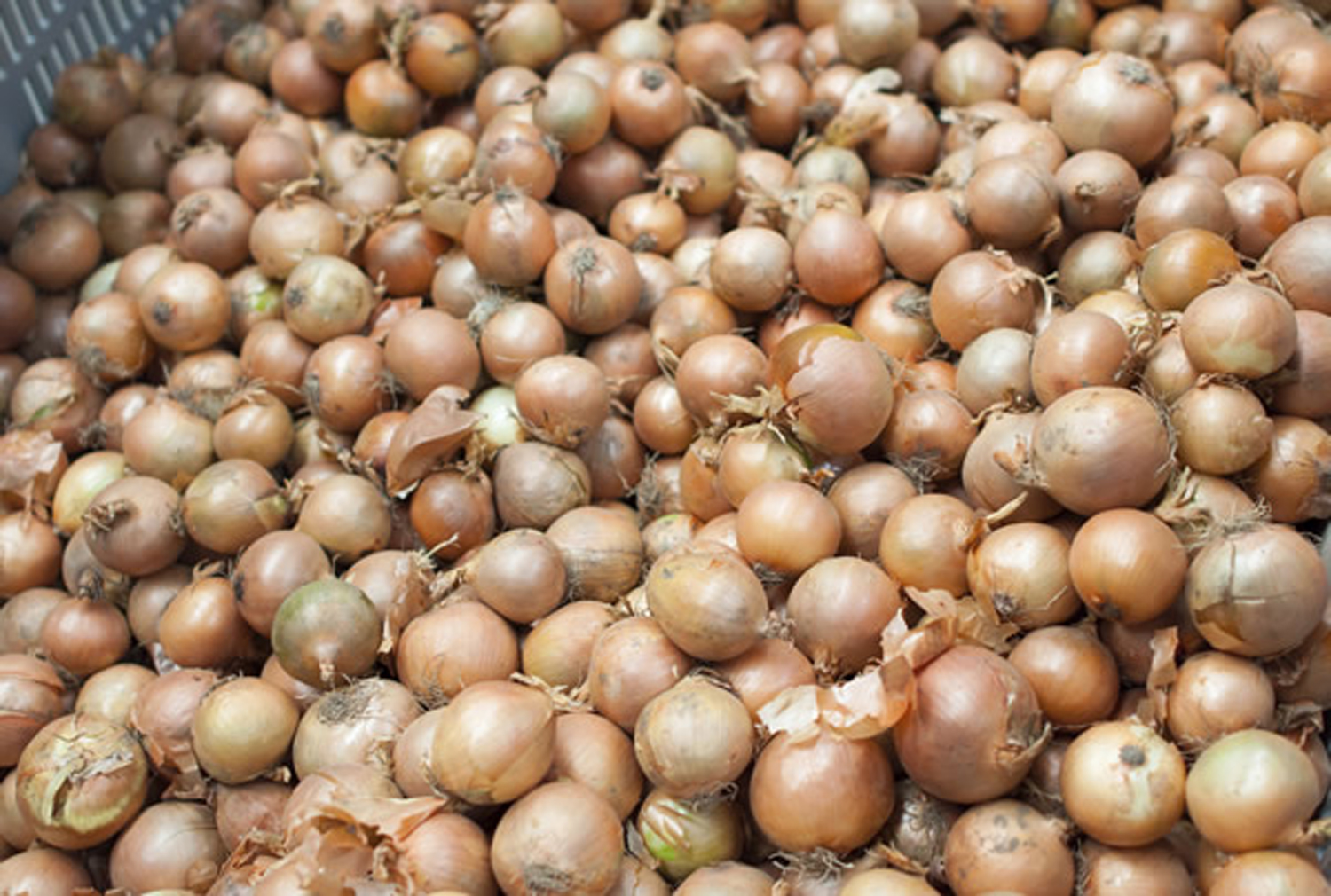Economics of Coleslaw
Ontario's 2014 Onion and Carrot Harvest
Harvest time in the big salad bowl we specialty crop farmers north of Toronto call the Holland Marsh can illustrate the seasonal toss-up that is rooted in agricultural economics.
Farming in Ontario, or anywhere, to be honest, is challenging at the best of times. Throw in above-average yields of carrots and onions, as farmers here and internationally experienced this past growing season, and you get a quick lesson in the impact of overproduction. Now, you would think that farmers would be thrilled with above-average onion crops, but the folly of bounty is the dilemma it creates. Many of us do not have enough pallet boxes to hold the crop or sufficient storage barns to preserve the crop until sales are made. You are about to get a glimpse of the financial stress the above-noted conditions have caused for farmers in the 2014 growing season.
I've always said that agriculture doesn't make a lot of sense from a business point of view. This may sound like an irrational statement when you consider that every decision farmers make for their operations has a direct impact on the bottom line of their agricultural business.
Farmers invest hundreds of thousands of dollars into their businesses on an annual basis, starting with deciding which seed is the right seed for their land, whether it is drought and disease resistant and well-suited to the particular growing area. There's the issue of pests prevalent in the region. The list of costs is long: equipment; operational; labour; health and safety, crop, vehicle, and building insurance; pest management (our partners who help monitor the fields for bugs, disease, weeds, fungus, and the like, and help provide farmers with sustainable solutions); machine repairs; attending conferences to gain insight and information on current best farm practices; on-farm food-safety expenses; and the list goes on and on.
Now for the part that makes no sense at all in this business of agriculture, we (farmers—growers of the produce) do not set the price for the end product that we sow, transplant, nurture, grow, harvest and store. We can either agree to a set price or "hold out" until a fair price is offered, which is virtually impossible when you recall that we don't have sufficient storage facilities for our bumper crop. Hard to believe, isn't it? We are told by second and third parties in the food value chain what they want to pay for the produce.
At harvest time, you expect the market price to be "on the low side," because farmers want to, and have to, move those crops. Some farmers will sell directly from the field because their cash flow is dwindling, bills must be paid and, therefore, crops must be sold. There are farmers in some growing areas who purposely overproduce, since they have no capacity for storage and their soil does not create a product that can be stored for long periods of time. Their goal is to get the "early market," which sometimes equates to below cost-of-production prices and impacts the entire market by setting a low price early on.
This past fall, the prices paid to the farmers was grossly discounted, in some cases at least half the cost of production. At the end of October, beginning of November, we were looking at $1.00 per 50 pounds of carrots when it should be closer to $6.00 per 50 pounds. Similarly, onions were getting $3.00 per 50 pounds when a reasonable price would be around $8.00. I was advised by a university student who did some research on this that such prices hadn't been seen since around 1948, yet farmers' costs are based on 2014 input values! Onion prices are not budging, and sales are slow to non-existent.
Farmers here in the Holland Marsh have and continue to be hit hard pricewise when it comes to selling this year's crop, onions in particular. While the weather throughout the growing season kept us on the edge of our tractor seats, overall our carrot and onion production did well, providing us with above-average onion crops, both yield-wise and quality-wise.
Added to this local experience is a combined international reality of overproduction and embargos on countries such as Russia. You might be wondering why we are feeling the impact of political tensions seemingly a world away. You have to remember that, while we promote and encourage consumers to buy locally, the reality is that, as commercial farmers who export our crops, we are competing for market share within a global marketplace. European farmers are restricted from selling into Russia. Their crop has to go somewhere, so they are tapping into North American markets.
While I realize that our trade agreements do not support a "protectionist" mentality, I do believe there should be a clause or two crafted to trigger restrictions on imported produce under special circumstances such as we are experiencing this year—an over-abundance here in Canada—so as to prevent cheaper imports from displacing our own agricultural industry.
Food production in Canada is held to very high standards, with many rules and regulations for the benefit of our consumers, whether they are local, provincial, national or international. Agriculture is a very complicated industry to work within, let alone to try to understand from a non-farmer standpoint. Farmers don't set the price, but consumers can have real clout at the checkout. If you know that a certain vegetable or fruit is grown here but you do not see it on the grocer's shelf, ask your produce manager or, even better, send letters to the grocery chain. If you want to see more local food, ask for it!





